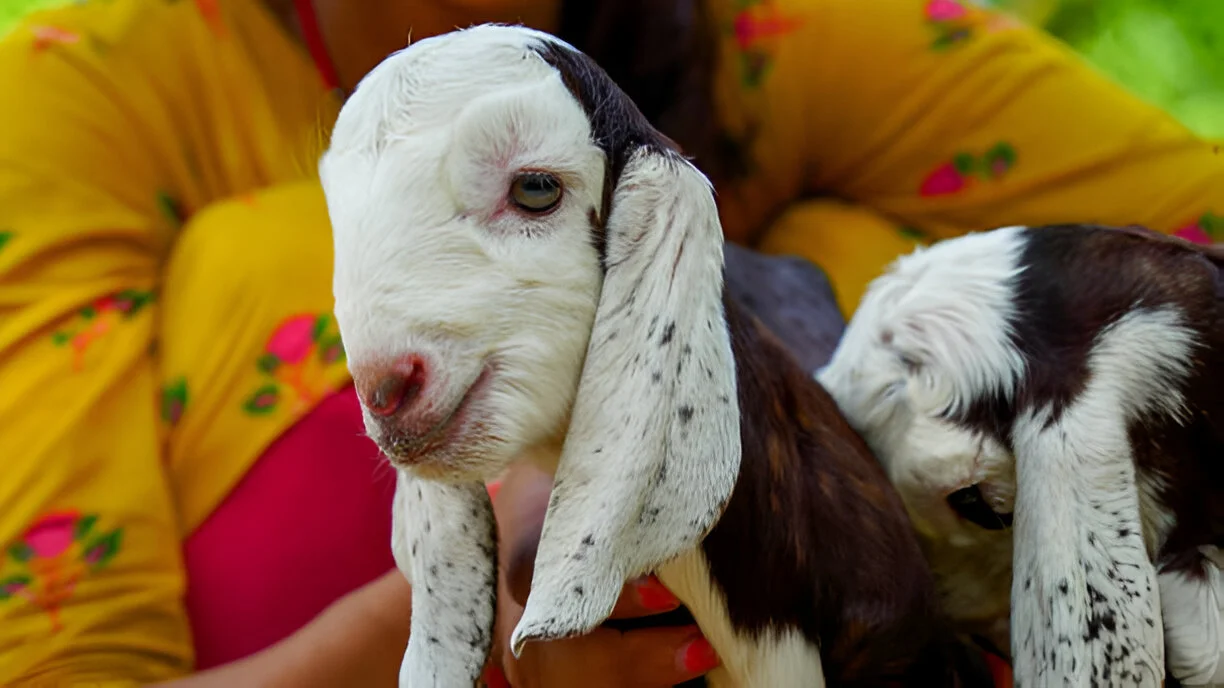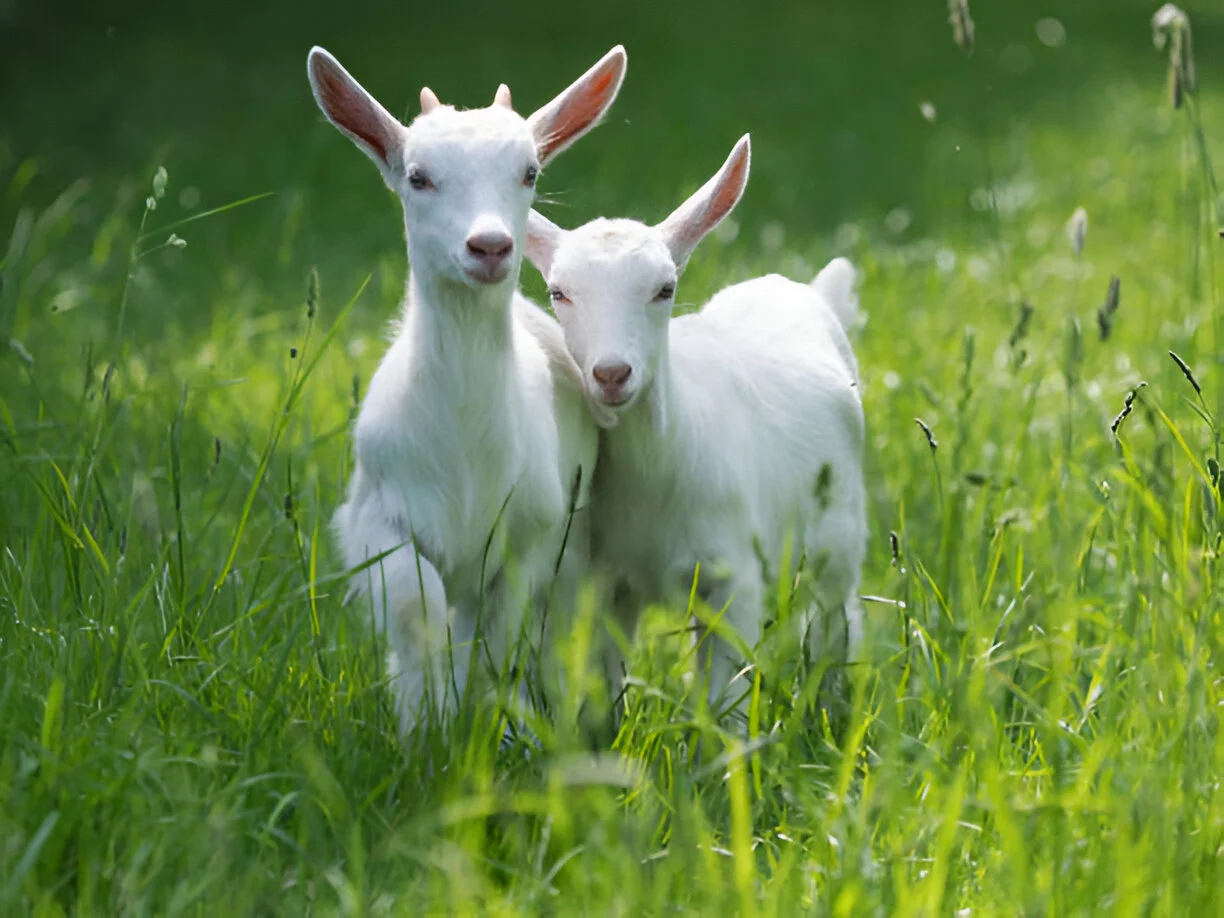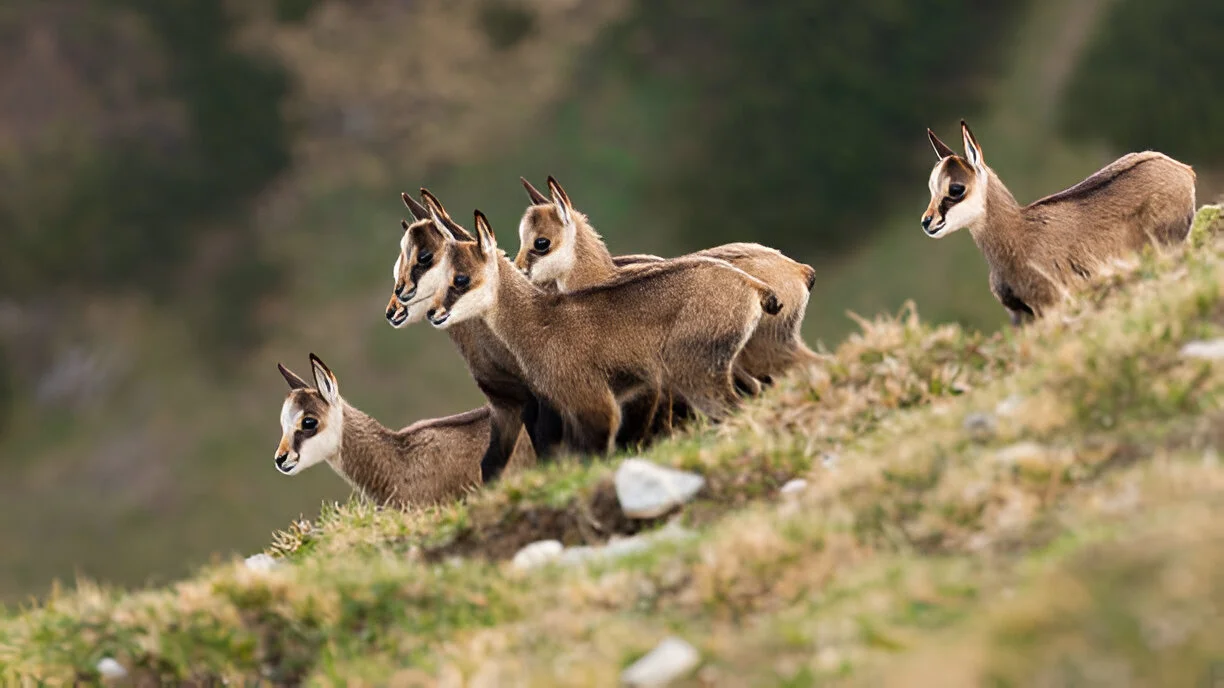No products in the cart.
Raising goats can be a highly rewarding endeavour, whether you’re a seasoned farmer, a new hobbyist, or an agri-entrepreneur. If you’re considering adding goats to your livestock, understanding how long it takes for goats to mature is crucial for effective breeding and management. Among the most popular goat breeds are Beetal, Alpine, and Saanen goats. Each breed has its own unique growth pattern, and knowing when they reach maturity can help you plan your breeding cycles, determine when they’re ready for milk production, and set expectations for market readiness. In this article, we’ll explore the growth timelines for Beetal, Alpine, and Saanen goats while providing insights and practical advice for farmers and breeders.

Growth Stages of Goats: A General Overview
Before diving into the specifics of the Beetal, Alpine, and Saanen goats, it’s essential to understand the general growth stages all goats go through. This will give you a baseline to compare different breeds and their respective timelines.
- Kid Stage (0 to 6 months): The first stage of growth for all goats is the “kid” stage. During this time, goats are highly dependent on their mothers for nutrition. They drink milk and gradually transition to solid foods, such as hay and grains.
- Weaning Period (4 to 6 months): By the time a goat reaches 4 to 6 months, it is weaned from its mother’s milk and begins eating more solid food. This is a critical period where the goat’s growth rate starts to pick up, and it begins gaining weight rapidly.
- Juvenile Stage (6 to 12 months): In this stage, goats continue growing and gaining muscle mass. They are still considered juveniles but begin to show more independence. The juvenile phase is crucial for setting the foundation for the goat’s future productivity.
- Mature Stage (12 to 24 months): By the time a goat reaches 1 to 2 years of age, it has reached its full physical maturity. At this stage, most goats can start producing milk (if they’re dairy breeds) and are capable of breeding.

How Long Does It Take for Beetal Goats to Mature?
Beetal goats, a native breed of India, are known for their strength, resilience, and impressive size. Beetal goats are primarily raised for milk and meat production, making them a valuable asset for farmers and breeders.
Beetal Goat Growth Timeline
- Kid to Weaning: Beetal kids are typically weaned between 4 and 6 months. During this period, they experience rapid growth, reaching around 30 to 40 kg (66 to 88 lbs) by the time they are weaned.
- Maturity: Beetal goats usually reach full maturity by 18 to 24 months. Females typically reach breeding age at around 12 to 14 months, while males may take a little longer to fully mature.
Factors Influencing Growth in Beetal Goats
- Nutrition: Beetal goats are large and require proper nutrition for healthy growth. High-quality feed, including grass, hay, and balanced grains, is essential for ensuring that Beetal goats reach their potential size.
- Climate: As a breed adapted to the harsh climates of India, Beetal goats are quite hardy but may take longer to mature in cooler climates if not properly cared for.

How Long Does It Take for Saanen Goats to Mature?
Saanen goats are considered one of the best dairy breeds, famous for their high milk yield and gentle nature. These goats are widely raised for commercial dairy farming and are an excellent choice for farmers focusing on milk production.
Saanen Goat Growth Timeline
- Kid to Weaning: Saanen kids typically grow fast and are weaned between 4 and 6 months. By this time, they can weigh between 30 and 45 kg (66 to 99 lbs).
- Maturity: Saanen goats reach maturity between 18 and 24 months. Female Saanens usually start producing milk at around 12 to 14 months, with peak milk production typically occurring around their second year.
Factors Influencing Growth in Saanen Goats
- Genetics: Saanen goats are known for their strong genetic potential in milk production. Ensuring a high-quality breeding program is key to achieving optimal growth.
- Diet: As dairy goats, Saanens require a nutrient-rich diet to support their milk production and growth. A well-balanced diet consisting of fresh hay, grains, and minerals is essential for healthy development.

How Long Does It Take for Alpine Goats to Mature?
Alpine goats are one of the most popular dairy breeds in the world. Known for their excellent milk production and adaptability to different climates, they’re often chosen by dairy farmers.
Alpine Goat Growth Timeline
- Kid to Weaning: Like Beetal goats, Alpine kids are weaned between 4 and 6 months. At weaning, they can weigh around 25 to 35 kg (55 to 77 lbs).
- Maturity: Alpine goats reach full maturity between 18 and 24 months. Females can start producing milk around 12 to 14 months, making them highly sought after by dairy farmers.
Factors Influencing Growth in Alpine Goats
- Health and Care: Proper health management, including vaccinations, deworming, and a well-balanced diet, is critical for ensuring that Alpine goats reach maturity at the proper time.
- Milk Production: Alpine goats begin producing milk once they have matured. A female goat’s milk production can peak in the first year, but consistent milking requires proper nutrition and breeding cycles.
Tips for Accelerating Goat Growth and Ensuring Healthy Maturity
Whether you’re raising Beetal, Alpine, or Saanen goats, there are several key tips to ensure your goats mature at the optimal rate and reach their full potential.
1. Provide Proper Nutrition
High-quality, nutrient-rich feed is essential for the healthy growth of goats. Ensure that your goats receive adequate protein, minerals, and vitamins to support their development. Consider consulting with a nutritionist for customized feeding plans.
2. Monitor Health and Prevent Disease
Regular veterinary check-ups and proactive disease prevention (such as vaccinations and deworming) can help ensure that your goats grow strong and healthy. Early intervention can prevent stunted growth or developmental delays.
3. Manage Breeding Cycles Effectively
For dairy goats like the Alpine and Saanen, managing breeding cycles carefully can help ensure that females produce milk consistently and males are used for breeding at the right time.
4. Create a Comfortable Living Environment
Goats need space to roam, proper shelter, and a safe environment to thrive. Ensuring that they have access to clean water, fresh food, and safe living conditions will significantly impact their growth and health.
5. Regular Exercise
Allow your goats enough space to roam and exercise. This will help them develop strong muscles and maintain good physical health as they mature.
Ready to Start Raising Goats?
Now that you have a better understanding of the growth timelines and requirements for Beetal, Alpine, and Saanen goats, you can make more informed decisions about raising and breeding goats. By following best practices for nutrition, health management, and breeding, you can help your goats reach their full potential and ensure a successful farming venture.
Explore more about goat farming and maximize your livestock’s potential for increased productivity and profitability!









